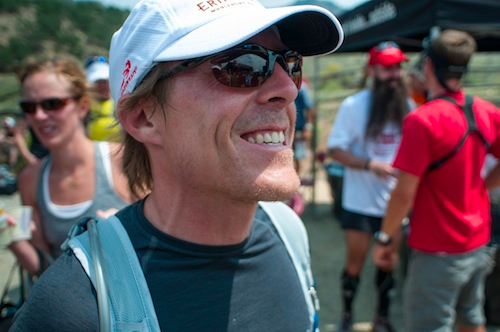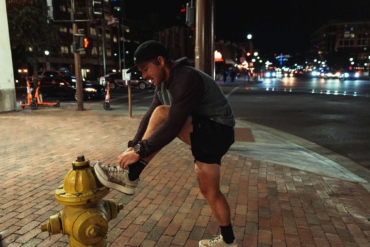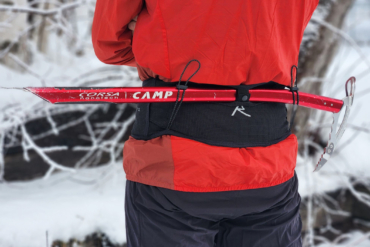I risked a quick glance ahead while sprinting down the mountain trail. Sunlight fell in patches on the forest floor. It was the start of day two on the GORE–TEX TransRockies Run, an annual stage race across Colorado, and I was about to crash.
BAM! From a daze I was jolted back to reality as my toe pounded into a rocky ledge. I fell forward, feet wheeling, head approaching the ground. My foot throbbed. My toe bled inside my shoe. The pain had begun.

Pain can come in a few flavors on the TransRockies Run. The 120-mile race pits teams of two against a large competitive field as well as a course that includes back to back challenging mountain trail runs — some marathon-length and with thousands of feet of elevation gain — for six days straight.
Each day has its stage winner. At the end, all the times are tallied, and the organizers crown an overall winner to the grueling event. This year, I ran with teammate Leon Lutz (partners are required; you run the whole race together), and we experienced a huge range of highs and lows.
Despite some pain, Lutz and I ran our way to a 12th-place finish overall in the men’s open division. We had a cumulative time of just under 24 hours of running through the mountains for the week. Here are a few tips we learned along the way. —Sean McCoy
Train Smart. If you are an elite runner, you know what to do. If you are new to this kind of running my advice is simple: Run a lot of miles and run a lot of hills. I used a basic marathon-training schedule with added hill workouts to prepare for the 2012 race. You will gain 20,000 feet of elevation, at altitude, during the TransRockies. Other mountain races have similar profiles. Be physically prepared or it won’t be fun at all.
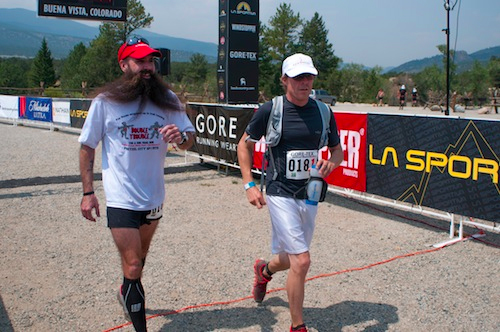
Organize Your Gear. A six-day stage race requires the moving of equipment each day to a new camp. (The organizers transport your camping and sleeping gear.) Racers are responsible to get mandatory gear ready before each day’s stage. Short story is, there’s lots of gear, food, clothing, shoes, and other equipment in the mix. Stay organized or you’ll quickly become out of hand.
Fuel for the Run. Running 120 miles as fast as possible requires a lot of calories. I was always hungry. Fortunately, the TransRockies is a well-supported race. There was nearly always food for the taking at aid stations on the trail. The key for me was to constantly eat and drink small snacks for a steady flow of calories and fluids throughout each day.
Taking in about 200 calories an hour — which equals to a gel packet every 30 minutes — is a reasonable goal if you’re a mid-pack runner on this kind of endurance event. (You’ll eat less if you’re more a sprinter.) Some people need more or less than this amont, and you need to experiment and train your body to eat while running before the event starts.
While running, my partner and I relied on a few key foods, including SaltStick electrolyte tablets and various flavors of GU and Honey Stinger gels. We supplemented those with random snack foods such as chips, Cheetos and peanut butter and jelly sandwiches at aid stations. We ate huge meals in the evening and small breakfasts each morning before the start. Find a schedule that works for your body and stick with it. You need the right fuel to make it through.
Acclimate. As a team, we failed at this one. While I live at nearly 6,000 feet above sea level in Denver, my teammate lives at about 100 feet in Pennsylvania. He arrived the day before the race start and crashed hard under the burden of altitude sickness after about 12 miles on the first day. He puked like crazy for about two hours. He gutted it out and was able to finish, but we raced out of a hole for the rest of the event. If at all possible, get to the race start altitude a few days early. Your body will thank you.

Recover. Recovery starts the moment you cross the finish line each day. It is absolutely critical in stage races like the TransRockies. With an average race time of about four hours in each stage, my partner and I spent the remaining 20 hours each day in recovery mode.
Our first stop after slamming back a few glasses of water and GU Brew was the nearest icy stream. Every finish line of the 2012 TransRockies (except the final one in Beaver Creek) was within a minute or two walking distance of some very cold water. Use it to chill your legs and feet and stimulate the healing process to limit swelling.
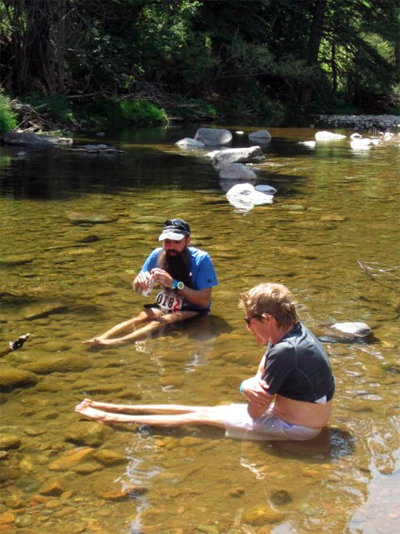
After 10 or 20 minutes of ice water it’s time to get off your feet as much as possible until the next morning. I would take some Ibuprofen and make sure to continue replenishing fluids and electrolytes. Get a good night’s sleep. For many, earplugs are critical for sleeping near the mass of 350 people in camp each night.
Prepare to Hurt. If you are a runner, you know that there is an element of pain involved. Running what amounts to a marathon each day for six straight days, over rocks and gravel and roots and God-knows-what, will leave your body, particularly your feet and legs, beaten.
It will hurt and you will have to fight through pain. Practice this if it’s out of your comfort range. Push harder on your long training runs. Jog some 14ers. Do whatever it takes to test your mental toughness and be ready to access it during the run. To finish strong, the TransRockies requires that kind of attitude and commitment to the task.
—Sean McCoy is a contributing editor. He finished 12th place in the men’s open division with partner Leon Lutz in the 2012 GORE–TEX TransRockies Run.
